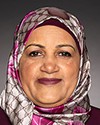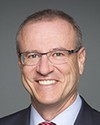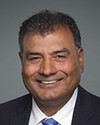Throughout the course of the first part of the Syrian operation, we learned several lessons and put them into play. The original plan in bringing people to Canada was that they would stay a night, two, or three in welcome hotels in Montreal and Toronto, which were the two ports of entry we were using. Then we would flow those people forward to their destination community fairly quickly thereafter.
It turned out that, with such a quick mass influx, some of the communities like Ottawa struggled with that and asked us to slow down, so people were staying in our hotels longer. Then we moved to put in settlement and resettlement programming in those hotels.
Then we moved into a different version in British Columbia, for example, where we did a hub-and-spoke model with other communities, rather than just Vancouver. We created a new RAP SPO in Victoria and then we resettled people in Abbotsford, Prince George, Kelowna, etc., to get folks out.
Then the third thing we learned was that it was better to have people moved to their province of destination if they couldn't be moved to their community immediately. That's the New Brunswick model I spoke about a little bit earlier. We moved people out of the hotels in Toronto and Montreal to Fredericton. Then they started to receive resettlement and settlement counselling and assistance, some language training, trips to art museums, and other field trips, that kind of stuff. Then they moved from Fredericton to other communities that hadn't typically received refugees, such as Bathurst, Edmunston, Charlotte County, and Woodstock.



